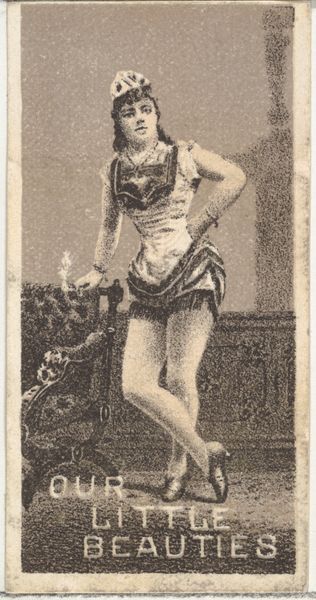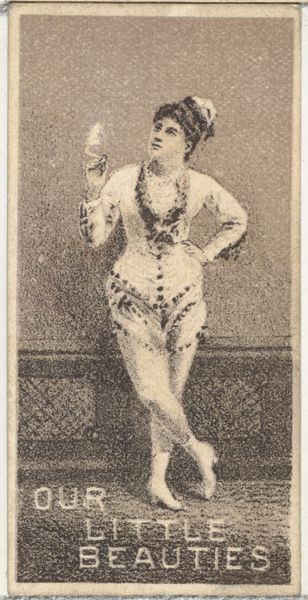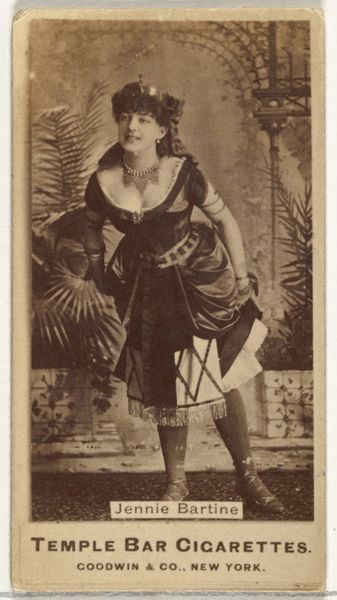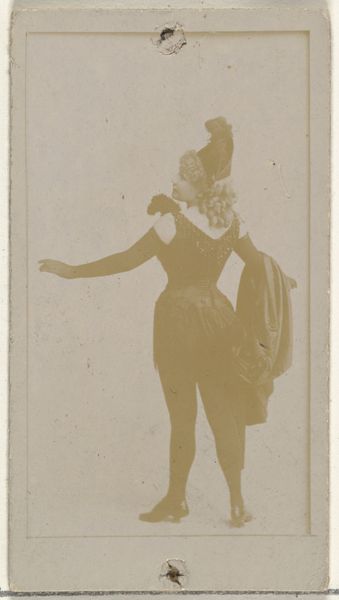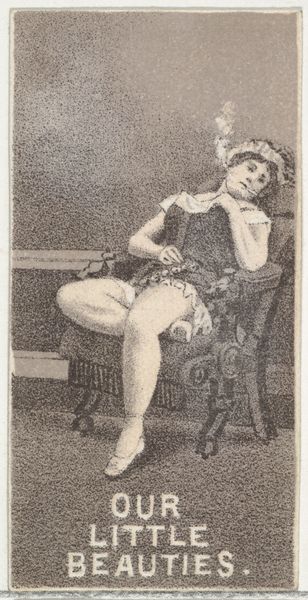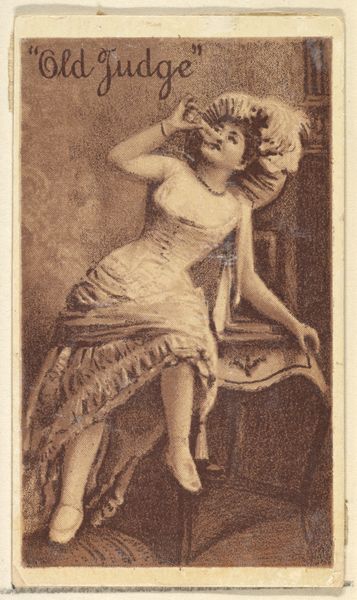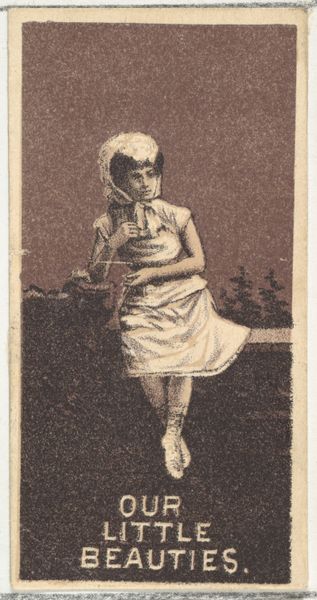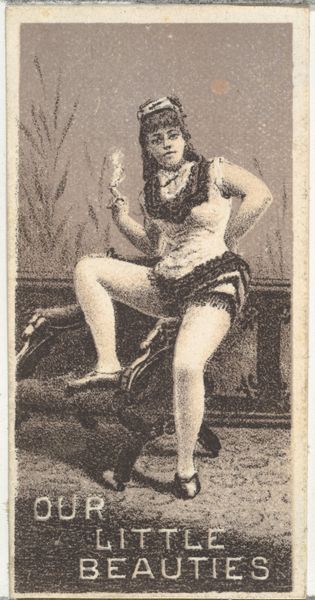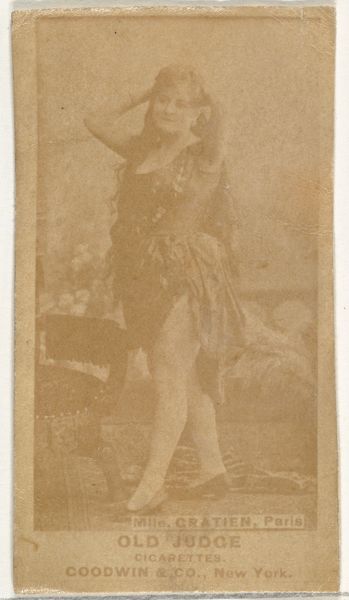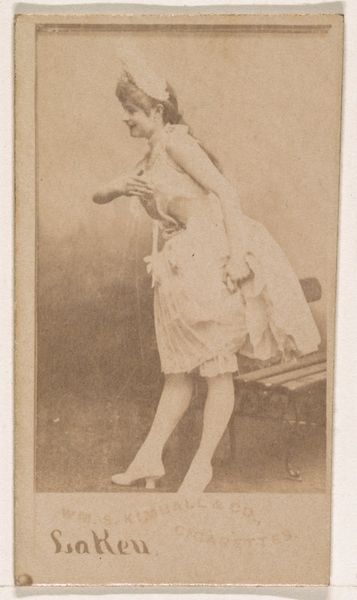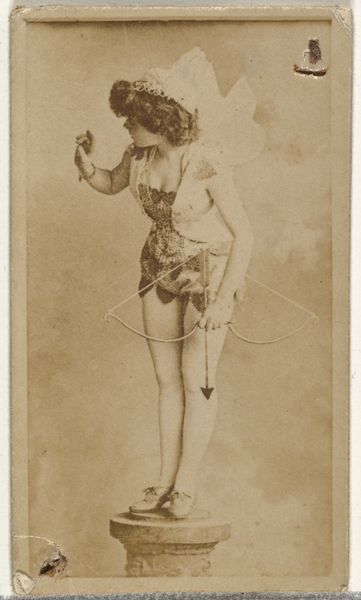
From the Actresses series (N57) promoting Our Little Beauties Cigarettes for Allen & Ginter brand tobacco products 1890
0:00
0:00
drawing, lithograph, print
#
portrait
#
drawing
#
lithograph
# print
#
figuration
#
19th century
#
genre-painting
Dimensions: Sheet: 2 7/8 × 1 1/2 in. (7.3 × 3.8 cm)
Copyright: Public Domain
Curator: What strikes me immediately is the contrast – this woman smoking, presented within the saccharine title "Our Little Beauties." Editor: Exactly. The lithograph, produced by Allen & Ginter around 1890, served as a promotional insert for their tobacco products. It’s part of a larger series depicting actresses. But seeing it now, through a 21st-century lens, it feels incredibly fraught, doesn't it? Curator: Oh, absolutely. It invites us to consider the societal expectations placed on women, particularly actresses, at the turn of the century. Their images are being commodified to sell tobacco, which is then connected to ideas of glamour, independence and desirability. Editor: You’ve put your finger right on it. She's poised so delicately, right? With that almost defiant curl of smoke rising. And yet, she’s "little," an object for consumption as much as the cigarettes are. Does it feel predatory to you? Curator: Undeniably. It's difficult not to see this portrait as contributing to the pervasive objectification of women during that era. These kinds of portraits in trade cards, were tools of advertisement deeply woven into consumerist and patriarchal structures. Consider also that many of Allen & Ginter's sets, like the "Pirates of the Spanish Main," indulged in a very white, Eurocentric colonial imagination. Editor: Which adds yet another uncomfortable layer to how "beauty" and value were, and in some ways continue to be, defined. It makes you think about who has the power to name and frame and sell an image. Curator: Precisely. So, while it's visually appealing and a compelling example of 19th-century lithography, it prompts important questions about gender, consumerism, and the male gaze. It encapsulates the paradoxes inherent in portraying women in commercial contexts during this period. Editor: Yes. I wonder what she felt about it, being presented that way. It's probably a very complicated emotional story. I am grateful it pushes me to think. Curator: It certainly illuminates a troubling facet of art history—how the image of women became another form of currency within a culture deeply marked by power imbalances. Editor: Well put. Now I need to go find a spot of sun. Perhaps with a cup of strong coffee and, I will admit, a cigarette. Just kidding!
Comments
No comments
Be the first to comment and join the conversation on the ultimate creative platform.

